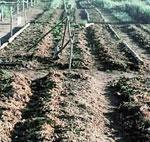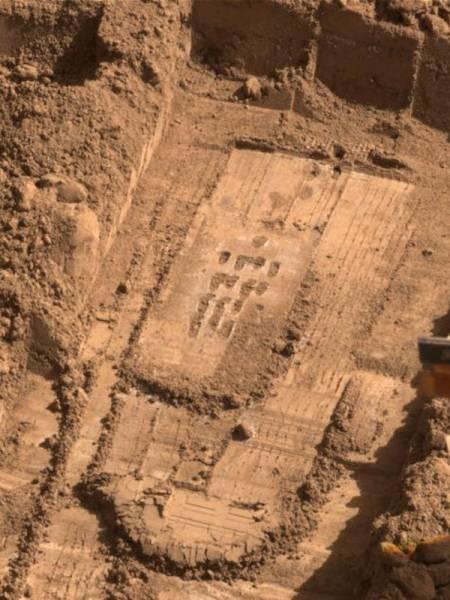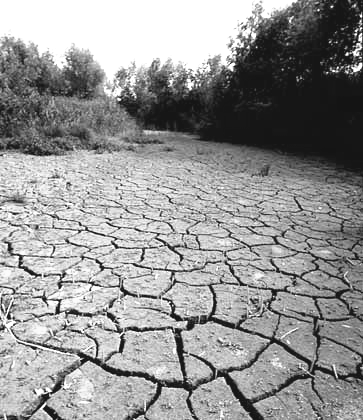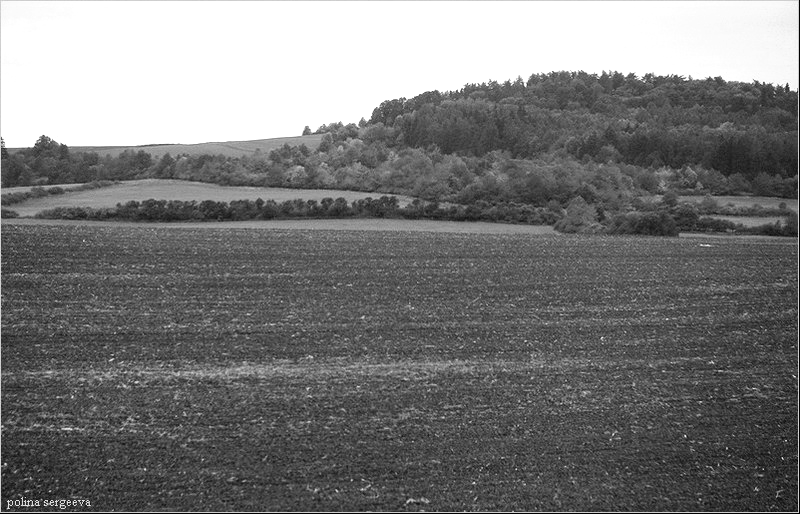
- •S. Seifullin
- •Учебное пособие
- •Для студентов землеустроительного факультета
- •Всех специальностей
- •Английский язык
- •Introduction
- •Insert prepositions if necessary:
- •4. Give your own definitions of the words:
- •5.Render the text ‘Composition of soils’.
- •5. Render the text:
- •6. Retell the text ‘ Structure of soil’:
- •I. Study the following words:
- •III. Make up your own sentences with words given above in exercise 2:
- •IV. What chemical conditions of soil do you know?
- •I. Study the following words:
- •II. Complete the sentences with appropriate words from the text and translate them into your language:
- •III . Say true or false these statements are, correct false ones:
- •IV. Give the characteristics of all soil classifications.
- •I. Study the following words:
- •II. Make up your own sentences with the following word combinations:
- •III. Translate the following sentences into your language:
- •I. Study the following words:
- •II. Define the part of speech of the following words:
- •III. Match the words with their definitions:
- •IV. Put questions to the following sentences:
- •V. Write a short summary of the text ‘Soil and its management’.
- •III. Find opposite words:
- •IV. Find odd words:
- •It is far to conclude from the experiment described in this passage that
- •6. Give a short summary of the text.
- •I. Read and translate the text:
- •II.. Work in pairs. Ask questions according to the model:
- •Plants that move
- •Plants That Glow
- •Comprehension Check
- •II. Define the part of speech of the following words:
- •I. Study the following words:
- •I. Study the following words:
- •I. Study the following words & word combinations:
- •II. Define the part of speech of the following words:
- •III. Translate the following sentences into your language:
- •V. Retell the text ‘Soil assessment and Land evaluation’.
- •II. Make up sentences with the words & word combinations given
- •III. Complete the sentences with appropriate words from the text:
- •IV. Give your own definitions of the words:
- •V. Render the text ‘Land evaluation for Land use planning’.
- •I. Study the following words:
- •I. Study the following words:
- •I. Study the following words:
- •III. Make up your own sentences with words given above in exercise 2:
- •IV. What do you know about mortgage in your country?
- •V. Retell the text ‘Mortgage’
- •I. Study the following words:
- •II. Make up sentences with the words & word combinations given
- •III. Insert prepositions if necessary:
- •IV. Give your own definitions of the words:
- •V. Retell the text ‘Joint Tenancy’.
- •I. Study the following words:
- •I. Study the following words:
- •I. Study the following words & word combinations:
- •II. Discuss the update state and goals of land use planning in our country.
- •III. Read and discuss the following text:
- •IV. Put as many questions as it possible to the text given above:
- •I. Study the following words & word combinations:
- •1. Give the equivalents of the following word combinations in your language:
- •2. Put your own questions to the text “Land Assessment In Kazakhstan
- •3. Read the text and tell what problem they discuss:
- •2. Define the part of speech of the following words:
- •3. Give the synonyms of the following words & word combination:
- •4. Put five questions to the text “Land Administration”
- •5. Give your own definition of the word combination ‘Land Administration’.
- •1. Read and translate the following words:
- •2. Define the part of speech of the following words:
- •3. Explain your own understanding of the words:
- •4. What is your own opinion about cadastre system in our country and abroad?
- •I. Study the followings words & word combinations:
- •I. Study the following words & word combinations from the text:
- •I. Study the following words & word combinations from the text:
- •II. Answer the following tasks to the text:
- •I. Study the following words and word combinations:
- •II. Answer the following tasks to the text:
- •I. Study the following words and word combinations:
- •II. Answer the following tasks to the text:
- •I. Study the following words and word combinations from the text above:
- •II. Answer the followings tasks to the text:
- •I. Study the following words and word combinations:
- •II. Answer the following tasks to the text:
- •I. Study the following words & word combinations:
- •II. Answer the following tasks to the text:
- •Grammar reference Passive Voice 1
- •Passive Voice 2
- •Relative clauses 2
- •Types of questions 1
- •Types of questions 2 Tag or Disjunctive Questions
- •Indirect speech 1
- •Indirect speech 2
- •Conditional sentences 1
- •Verbs with two parts: intransitive
- •Revision
- •Study the following irregular verbs
- •Английский язык для студентов
5. Render the text:


TEXT 4 EFFECTS OF CLIMATE AND LAND SURFACE FEATURES
Climate affects the amount of biological and chemical activity in a soil, including the kinds and rates of weathering. For example, physical disintegration is the main form of weathering in cool, dry climates. Higher temperatures and humidity encourage chemical decomposition as well as disintegration. In addition, decaying and most other soil activities require warm, moist conditions. These activities slow down or even stop in cold weather. Therefore, soils in cool, dry climates tend to be shallower and less developed than those in warm, humid regions.
Effects of land surface features also influence the amount of soil development in an area. For example, water running off the land erodes the soil and exposes new rock to weathering. Also, soils on slopes erode more rapidly than those on flat areas. They generally have less time to form and therefore develop less than do soils on flat terrains.
Effects of plants and animals. Soil organisms and organic material help soil develop, and they also protect it from erosion. The death and decay of plants and animals add organic material to the soil. This organic material helps the soil support new organisms. Soils that have a cover of vegetation and contain large amounts of organic material are not easily eroded.
Effects of time. Soils that are exposed to intense soil formation processes for long periods of time become deep and well developed. Soils that erode quickly or have been protected from such processes for a long time are much less developed.
Study the following words:
Cool, dry, humidity, encourage, higher temperature, activity, therefore, tend, shallow, humid, expose, slope, rapidly, flat terrain, vegetation, to intense, develop.
Give antonyms of the following words:
Dry, cool, decomposition, include, shallow, expose, humid, warm, wide,
deep.
Make up your own sentences with the words given above, in exercise 2
Answer the following questions to the text:
What does climate affect?
What factors do chemical decomposition and disintegration encourage?
How is soil developed?
How does time effect the soil?
How do plants and animals effect the soil?
5. Speak on the effects of climate, plants, animals and time .

TEXT 5 CHARACTERISTICS OF SOIL
The method and rate of soil formation differs throughout a body of soil. As a result, the soil develops layers. These layers are called soil horizons. Soil horizons may be thick or thin, and they may resemble or differ from the surrounding horizons. The boundaries between the layers can be distinct or barely noticeable.
Most soils include three major horizons. The upper two called the A and B horizons are the most highly developed layers. The A horizon is also known as topsoil. The lowest horizon called the C-horizon or the subsoil, is exposed to little weathering. Its composition resembles that of the parent material. Pedologist describe soils by the characteristics of the soil horizons, including (1) color, (2) texture, (3) structure, and (4) chemical conditions.
Color. Soils range in color from yellow and red to dark brown and black. The color of a soil helps pedologist estimate the amounts of air, water, organic matter, and certain elements in the soil. For example, a red color may indicate that iron compounds are present in the soil.
Texture of a soil depends on the size of its mineral particles. Sands are largest particles. The individual grains can be seen and felt. Silts are just large enough to be seen, and clays are microscopic. Pedologists divide soils into textural classes according to the amounts of sand, silt and clay in a soil. For example, the mineral portions of soils classified as loam contain from 7 to 27 per cent clay and less than 52 per cent sand. In silty clay, more than 40 per cent of the mineral particles are clay, and more than 40 per cent are silt. Texture helps determine how thoroughly water drains from a soil. Sands promote drainage better than clays.
Study the following words:
Soil, layer, boundary, topsoil, subsoil, parent material, resemble, major, noticeable, pedologist, organic matter, indicate, iron compound, amount, loam, contain, clay, silt, thoroughly, drainage, promote.
Define the part of speech of the following words:
Formation, estimate, barely, silty, mineral, boundary, texture, thin, microscopic, textural, largest, grain, highly, characteristics, layer.
Which adjectives go together with the word “soil” ?
Ideal, suitable, close-growing, pervious, approximate, special, saturated, available, artificial, shallow, hydraulic, steep.
Make up sentences with word combinations given above in exercise 3:
Complete the sentences with appropriate words from the text:
Soil horizons may be thick or … , and they may resemble or … from the surrounding horizons.
Texture helps … how thoroughly water drains from a soil.
The … between the … can be distinct or barely noticeable.
The color of a soil helps … estimate the … of air, water, organic matter, and certain elements in the soil.
Sands … drainage better than … .
Give a short written annotation of text 5:

TEXT 6 STRUCTURE OF SOIL
When soil particles aggregate, they form clumps of soil that are called peds. Most peds range from less than ½ to 6 inches (1.3 to 15 centimeters) in diameter. Their shape and arrangement determine a soil’s structure. The ability of peds and soil particles to stick together and hold their shape is called consistence.
Most soils contain two or more kinds of structures. Some soils have no definite structure. In some such soils, the peds lack a definite shape or arrangement. In others, the particles do not aggregate.
There are three main kinds of soil structures: (1) platelike, (2) prismlike, and (3) blocklike. Platelike peds are thin, horizontal plates that occur in any horizon. Prismlike peds are column-shaped subsoil structures. Blocklike peds look like blocks with flat or curved sides. Large, flat –sided, blocklike, peds commonly occur in subsoils. Small, rounded, blocklike peds make up most topsoils. They contain more organic matter and hold water and nutrients better than do larger peds.
Study the following words :
Soil particles, aggregate, clump, peds, shape, arrangement, to stick, consistence, thin, flat, curved, make up, nutrients.
Define the part of speech of the following words:
Stick, platelike, definite, ability, curved, commonly, nutrients, arrangement, structure, rounded, make up.
Translate the following derivatives:
Arrangement, arrange, arranging, structures, structural, common, commonly, define, definition, defining, definite.
Give definitions of the terms ‘topsoil’, ‘subsoil’:
Translate the following sentences:
Most soils contain two or more kinds of structures.
Most peds range from less than ½ to 6 inches in diameter.
Small, rounded, blocklike peds make up most topsoils.
Some soils have no definite structure.
